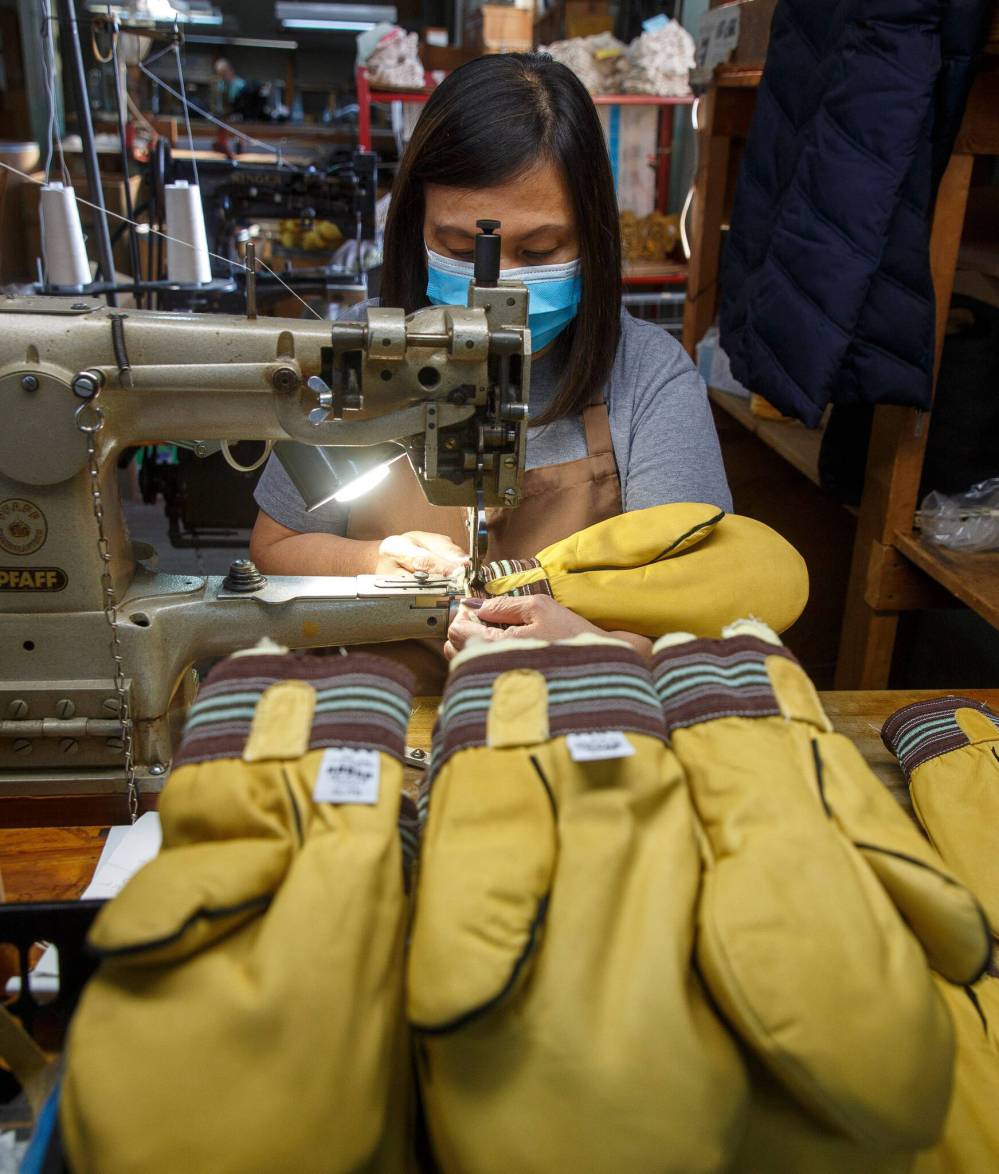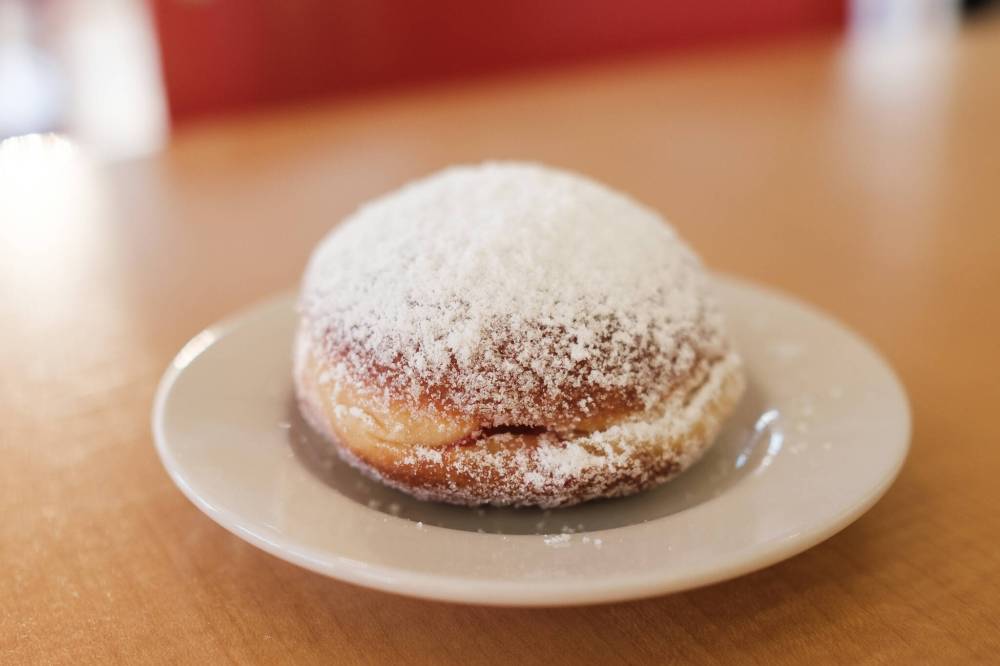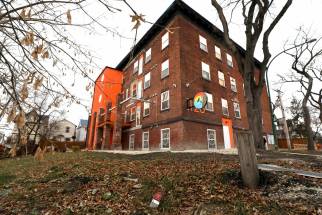The words of Winnipeg Jeanne’s cakes, bumper shining, nips, whiteout… how many do you know?
Read this article for free:
or
Already have an account? Log in here »
To continue reading, please subscribe:
Monthly Digital Subscription
$0 for the first 4 weeks*
- Enjoy unlimited reading on winnipegfreepress.com
- Read the E-Edition, our digital replica newspaper
- Access News Break, our award-winning app
- Play interactive puzzles
*No charge for 4 weeks then price increases to the regular rate of $19.00 plus GST every four weeks. Offer available to new and qualified returning subscribers only. Cancel any time.
Monthly Digital Subscription
$4.75/week*
- Enjoy unlimited reading on winnipegfreepress.com
- Read the E-Edition, our digital replica newspaper
- Access News Break, our award-winning app
- Play interactive puzzles
*Billed as $19 plus GST every four weeks. Cancel any time.
To continue reading, please subscribe:
Add Free Press access to your Brandon Sun subscription for only an additional
$1 for the first 4 weeks*
*Your next subscription payment will increase by $1.00 and you will be charged $16.99 plus GST for four weeks. After four weeks, your payment will increase to $23.99 plus GST every four weeks.
Read unlimited articles for free today:
or
Already have an account? Log in here »
Hey there, time traveller!
This article was published 13/11/2022 (1120 days ago), so information in it may no longer be current.
How well do you speak “Winnipegger?”
Like any other region, Winnipeg and Manitoba have a variety of regional slang terms and phrases. There are some words you just won’t hear anywhere else and if you said them to a visitor or non-local when you’re visiting somewhere, they’d be bewildered.
Regional slang can bring people together. Knowing the right terms — being able to say “I see what you did there” to someone’s turn-of-phrase — makes you part of an in-group and contributes to a sense of shared identity, one that transcends age, ethnicity, socioeconomic status, or how long you’ve lived here.
JOHN WOODS / WINNIPEG FREE PRESS FILES Brothers Finn (left) and Fletcher, and dad David, collect some treats on Henderson this past Halloween. They are more likely to shout ‘trick or treat’ on doorsteps than the old-school ‘Halloween apples,’ of yore.
Jonathan Green, known as the English-speaking world’s leading slang lexicographer, told Time magazine in 2018 that “what slang really does is show us at our most human” and is a linguistic form of an “unfettered Freudian id.”
Rosetta Stone, the language-learning software development company, says learning a regional dialect rather than just a standard language “requires a deeper dive into cultural nuances that isn’t lost on native speakers” and says its “an incredible way to bond with new communities and expand your own borders in the process.”
In the spirit of celebrating a few of the terms unique to these parts — and having a few laughs — here is a compendium of Winnipeg and Manitoba-centric terms for your perusal.
If you’re from Winnipeg or have lived here for a long time, you may know most of them. After you’ve read it, send this article off to your non-Winnipeg family or friends and see how they do.
If you’re newer here or reading from elsewhere, you may know none or just a few. Know this, though — once you study these and incorporate them into your everyday speech, you’re one of us.
Joe Bryksa/ Winnipeg Free Press files Manitobans are familiar with the ‘booter,’ when one steps into a puddle and comes out with a wet boot.
● Booter: When you step into a deep puddle or slush pile and get a bunch of water or snow in your shoe or boot, making your sock all wet.
● Bumper-shining: An ill-advisable winter activity of hanging onto a car’s back bumper while it’s moving and sliding behind it without the driver noticing. This term is also used in Saskatchewan. If you’re on a skateboard, roller blades, or bike, it’s not bumper-shining, but “skitching.”
● Cabin: An alternate word for “cottage.” The term cabin could refer to anything from a rustic, log structure to a full-blown mansion, as long as it’s not one’s primary residence and it’s outside of the city and preferably near water. Cabin is generally at the lake (see below).
Daniel Crump / Winnipeg Free Press files The Fat Boy, Winnipeg burger extraordinaire. The name was coined by Dairi-Wip owner Mike Lambos in 1959.
● Fat Boy: A big, hearty burger with mustard, mayo, shredded lettuce, onions, tomatoes, and most importantly, a chili meat sauce. Fat Boys are served at various Greek burger joints and diners all around the city. Who makes it best— Daly Burger, George’s, Junior’s, Mrs. Mike’s, Red Top, VJ’s — is the subject of much debate. Gus Scouras takes credit for the basic concept of the fat boy’s chili sauce. Scouras, who grew up with Greece, came to Winnipeg with the recipe in the 1950s, and opened a number of restaurants including Big Boy, Junior’s, and Red Top. Many of Scouras’ employees, Greek immigrants as well, went on to open their own restaurants and took the chili-sauce recipe with them, transforming it into a Winnipeg staple. As for the coiner of the actual term “Fat Boy” — it was Mike Lambos, who bought Dairi-Wip Drive-In in 1959 after working at Big Boy.
MIKE APORIUS / WINNIPEG FREE PRESS FILES The Bridge Drive-In’s Goog Special, a delicious blueberry shake with bananas, fudge, whipped cream and a cherry.
● Dainties: A variety of bite-sized, sweet delicacies. Includes, but are not limited to, brownies, lemon squares, Nanaimo bars, butter tart slices, and shortbread cookies. There are many occasions a dainty tray or five may be trotted out — at Christmas, at come-and-go events, and funerals. Dainties are best eaten by the half-dozen in quick succession. See: matrimonial cake.
● Goog special: Or simply “Goog,” an over-the-top ice-cream concoction from the legendary Bridge Drive-In on Jubilee Ave. Consists of, and we’re quoting the BDI website here: “A blueberry upside-down thick shake, topped with sliced bananas, layered again with a signature hot fudge sundae, then topped with whipped cream and garnished with a cherry. Peanuts optional.”
MIKE DEAL / WINNIPEG FREE PRESS FILES Rosalinda Gabisan sews the liner into garbage mitts at Raber Glove Manufacturing Co. earlier this year. The tan-coloured mitts have been a Winnipeg tradition for 80-plus years.
● Garbage mitts: Usually tan-coloured cowhide-shell mittens. Not particularly stylish, but very practical, durable, and warm. Named as such because they used to be worn by Winnipeg garbage collectors in a bygone era. The Raber Glove Manufacturing Co., which has been making such mitts in Winnipeg for the past 80-plus years, trademarked “garbage mitts” in 2012.
● Gitch: A term for underwear that comes from the Ukrainian word “gáci.” Two variations also used in western Canada are “gotch” and “ginch.” Funnily enough, in Ontario, there is an athletic underwear brand called GITCH.
● “Halloween apples”: Something Winnipeggers of an older generation yelled in a sing-song style instead of “trick or treat” when going door to door on Halloween. The phrase was also used in Western Canada but is dying out.
John Woods / Winnipeg Free Press files Prefer more honey or more mayo in your honey dill sauce? Whatever the case, this remains the No. 1 condiment for chicken fingers in this city.
● Honey dill: The world’s greatest condiment for chicken fingers, fries, and just about anything else dippable. Perfect in its simplicity, it consists of honey, dill, and mayonnaise in some ratio (some people prefer it honey-forward while others prefer it mayo-forward.)
Honey dill was invented about 40 years ago at Mitzi’s in downtown Winnipeg, when owner Shirley Eng’s late husband Peter was trying to replicate a sauce they’d tried at another restaurant. Honey dill hasn’t caught on in other provinces, but many Manitobans ship jars of it off to ex-pats elsewhere in Canada and the world who are unhappy with having only plum, BBQ, or honey mustard sauces as dipping options.
● “It’s a dry cold”: Something Winnipeggers say as a coping mechanism when the mercury drops to a temperature that’s not actually liveable. Climate scientists have noted all cold is dry cold. “In the winter the air is just plain dry, no matter what the relative humidity is,” wrote climatology teacher Daniel Bezte for the Manitoba Co-operator last year.
Daniel Crump / Winnipeg Free Press files A jam buster, a jelly-filled doughnut. This one is powdered. Some are not.
● Jam buster: A jelly-filled doughnut, whether powdered or not. A bit of a misnomer, since jelly and jam aren’t the same thing (jelly is made with strained fruit juice, while jam is made of mashed up whole fruit.) Jam buster is also used in Northwestern Ontario.
● Jeanne: A woman who established a bakery in the 1930s who didn’t know that nearly 100 years later, people would be arguing about her cakes on a thing called the internet. Jeanne (pronounced “genie”) Van Landegham and her husband Achille opened Jeanne’s Bakery in 1936, and the cakes the Notre Dame Ave. bakery turns out by the thousands every day can be polarizing. Many Winnipeggers — perhaps those of an older generation who grew up with the cake at every special gathering — love them and even take them or ship them to other parts of Canada and abroad.
MIKE DEAL / WINNIPEG FREE PRESS FILES Do you dream of Jeanne? Jeanne’s Bakery has been baking their famous cakes since 1936. They might be a bit more polarizing these days.
On the other hand, some Winnipeggers hate them and think anyone who enjoys them has nostalgia glasses on. Regardless of where you fall on this debate — this writer enjoys a slice a few times per year and is ready for your angry emails — there’s no denying a Jeanne’s cake is unlike any other. For better or for worse, the cake with a crumbly sponge, a non-sweet, pastel-coloured icing that’s not quite buttercream, shortbread crust bottom, and chocolate-curl-covered sides has a place in Winnipeg’s cultural zeitgeist.
● Lag: Pronounced “lahj,” a short-hand version of “Lagimodiere,” the north-south Winnipeg artery on the eastern side of the city. Most likely developed out of laziness, since Lagimodiere is hard to say for some and “Lag” saves four syllables. Don’t say “Lag” to a tourist or else they’ll be looking for a street that doesn’t exist.
JOHN WOODS / THE CANADIAN PRESS FILES The Manitoba Legislative Building has its own nickname — leg (pronounced "ledge").
● Leg: Pronounced “ledge,” and refers to the Manitoba Legislative Building. Example: “there’s a protest happening down at the Leg.”
● Matrimonial cake: A type of dainty, consisting of a date filling between two layers of oatmeal shortbread. Commonly known as a “date square” in most other jurisdictions. The origin of the term “matrimonial cake” is debated, but one popular theory is that it’s called as such because it’s “two separate layers brought together by dates,” symbolizing courtship and marriage. “Matrimonial cake” is also used in Ohio.
● Monkey trail: An informal beaten path, usually through the woods or grassy areas, made by people on foot and bikes. Similar to the urban planning concept of a “desire line,” which emerges when people take the shortest or the most easily-navigated route between an origin and destination rather than the one that’s been built for them (such as cutting across a boulevard rather than going the long way around on a sidewalk.)
● Nip: Refers to a hamburger from longstanding diner chain Salisbury House, or more simply “Sals.” The term was coined by Salisbury House founder Ralph Erwin in 1931, when he opened up his first restaurant downtown. Erwin did not like the word “hamburger” so he created the term “nip” to refer to the dish being a “nip” or “bite” of Salisbury steak, not to refer to second syllable of “Winnipeg.”
● Social: The word “social,” in Manitoba’s case, is a noun in addition to a verb — a thing to go to in addition to something to be. When used as a noun, it refers to an evening gathering — usually held in a community club, hall, or basement — where you dance to cheesy music, imbibe cheap beer and Crown Royal, bid on prizes, and eat cold cuts, cheese, and rye bread at an hour you shouldn’t. The Boot Scootin’ Boogie and Brown Eyed Girl will play, there will be Munchies snack mix or ripple chips on every table, and you may get salami shouldered (see below). Usually, socials are held by engaged couples to raise money for their wedding, but they’re also thrown as fundraisers for a variety of charitable causes. You’ll probably get pressured by friends or coworkers a few times a year to buy tickets (almost always for $10), and you might even go despite not knowing the couple. Social-type events also exist in Ontario, but they’re called “stag and doe” parties.
● Salami shoulder: When someone at a social surreptitiously drapes a slice of salami or other cold meat from the late lunch platter over your shoulder and hopes you won’t notice. An example of good clean Prairie fun.
● The lake: Another term for “cabin” or “cottage”. Example: “I’m off to the lake.” Whatever lake your cabin is on, that’s “the lake.”
● Two-four: A case of 24 beers. Enough for two to four people.
● Windrow: A pile of snow spanning the width of one’s driveway or sidewalk after a snow plow goes by. A strange term, because Winnipeggers don’t usually refer to actual piles of snow created by whipping wind as “windrows,” but rather “snow drifts.”
MIKAELA MACKENZIE / WINNIPEG FREE PRESS FILES Everybody wear white tonight: when playoff season comes, so does the Winnipeg Whiteout, which debuted in 1987 as a response to Calgary’s ‘C of Red’.
● Whiteout: Not when snow and wind are reducing visibility, but when Winnipeg Jets fans deck out in white to support the team when it makes the Stanley Cup playoffs. The tradition dates back to 1987 and was a public relations stunt by the Jets 1.0 marketing department to respond to the Calgary Flames’ “C of Red.” The idea was that while not everyone had Jets gear, everyone had at least a white T-shirt in the closet. The Winnipeg Whiteout tradition continues in the Jets 2.0 era, with “Whiteout Parties” — where tens of thousands of fans pack the streets around the downtown arena.






